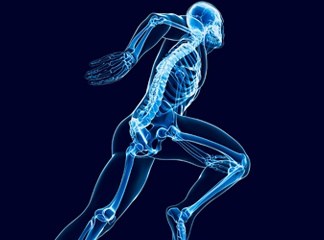Introduction
When it comes to managing musculoskeletal issues, the choices can be overwhelming. From chiropractors to physical therapists, many practitioners claim to have the answers. However, one option that stands out is consulting an osteopath. If you're in Southlake and dealing with back pain, joint discomfort, or other musculoskeletal ailments, you may wonder: Why choose an osteopath in Southlake for musculoskeletal issues? This article will delve deep into the benefits of osteopathic medicine, what sets osteopathic doctors apart from other healthcare providers, and how they can help you reclaim your well-being.
Why Choose an Osteopath in Southlake for Musculoskeletal Issues?
An osteopathic doctor, known for their holistic approach, focuses on treating the person as a whole rather than just symptoms. This philosophy is particularly beneficial for individuals suffering from musculoskeletal issues. An osteopath views the body as an integrated unit where structure and function are interconnected.

Understanding Osteopathic Medicine
Osteopathic medicine emphasizes preventive care and encourages patients to take responsibility for their health. Osteopathic doctors receive specialized training in diagnosing and treating conditions affecting bones, joints, and soft tissues. They employ a variety of techniques including manipulative treatments that can enhance alignment and alleviate pain.
The Holistic Approach of Osteopathy
In contrast to traditional medical practices that often rely heavily on medications or surgery, osteopathy top osteopath in Southlake seeks to understand the underlying causes of discomfort. For example, if you're experiencing back pain, rather than merely prescribing painkillers, an osteopath Southlake TX will examine your posture, lifestyle factors, and even emotional well-being.
Personalized Treatment Plans
Every individual is unique; hence their treatment should be too! When you visit an osteopathic doctor Southlake, they will create a tailored treatment plan based on your specific needs. This could include:
- Manual therapy Exercise recommendations Nutritional advice Stress management techniques
This personalized approach fosters faster recovery times and improves overall health outcomes.
What Conditions Can an Osteopath Treat?
Osteopaths are equipped to handle a plethora of conditions related to the musculoskeletal system. Here’s a list of common issues they address:
1. Back Pain
Back pain is one of the most prevalent complaints among adults today. Whether it's acute or chronic back pain caused by poor posture or injury, an osteopath employs various techniques to relieve tension and restore alignment.
2. Joint Pain
Joint discomfort can stem from arthritis or injuries. An osteopathic doctor utilizes manual therapies to improve joint mobility while simultaneously alleviating pain.
3. Neck Pain
Neck strain often arises from prolonged computer use or sleeping awkwardly. Through targeted manipulation and stretching exercises, neck pain can be significantly reduced.
4. Headaches & Migraines
Many headaches are tension-related and stem from muscular imbalances in the neck and spine. An osteopath can help identify these imbalances through examination.
5. Sports Injuries
Athletes often turn to osteopathy for rehabilitation after injuries such as sprains or strains due to its focus on functional movement patterns.
6. Postural Problems
Improper posture is a common issue that leads to various problems like back pain and fatigue; osteopathy aims at correcting these deficiencies through education and manual therapy.
How Does Osteopathy Work?
Understanding how osteopathy functions can further clarify why you might choose this path over others.
Manual Therapy Techniques
One of the core components of osteopathic medicine is manual therapy—this includes:
- Soft tissue work: Relaxing tight muscles Joint mobilization: Increasing range of motion Cranial-sacral therapy: Gentle manipulation of cranial bones
These methods aim not just at symptom relief but also at restoring natural balance within the body.
Benefits of Choosing an Osteopath in Southlake
So what makes selecting an osteopath in Southlake advantageous? Let’s take a closer look at several key benefits:
1. Comprehensive Assessments
Osteopaths conduct thorough evaluations that consider all aspects affecting your health—physical activities, lifestyle habits, even emotional health!
2. Drug-Free Solutions
With a strong emphasis on non-invasive treatments, you’ll find drug-free alternatives that promote healing without unwanted side effects.
3. Enhanced Quality of Life
By addressing root causes rather than merely treating symptoms, patients report improvements not only in their specific ailments but also in overall quality of life.
Frequently Asked Questions (FAQs)
What qualifications do osteopathic doctors have?
Osteopathic doctors complete medical school followed by residency training similar to traditional MDs but with additional training in hands-on techniques.
How long does treatment usually take?
Treatment duration varies based on individual conditions but typically ranges from 30 minutes to 1 hour per session.
Is osteopathy suitable for all ages?
Yes! Osteopathy can treat newborns through elderly patients with age-appropriate modifications.
Will my insurance cover visits to an osteopath?
Many insurance plans do cover visits; however, it’s best to check with your provider beforehand.
Can I see an osteopath without a referral?
In many cases yes! However, some insurance companies may require referrals first.
li13/ol1/hr6hr6/hr7hr7/##